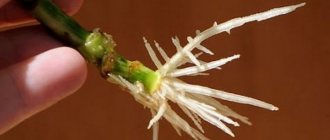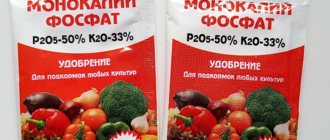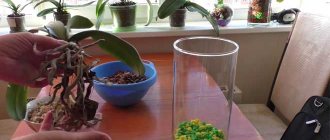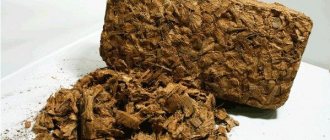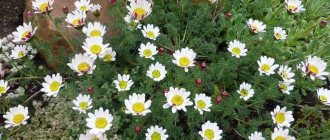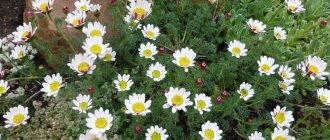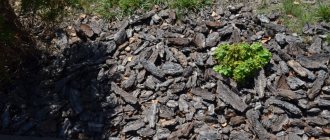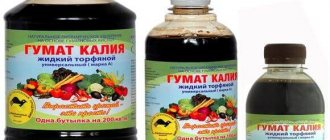- Potassium monophosphate is also beneficial for beneficial soil microflora. This is very important for greenhouse farming: drying out of the soil with seemingly sufficient watering in greenhouses regularly fed with this fertilizer is a rare exception, because microorganisms involved in soil structuring are in comfortable conditions.
Note: point 10 is also important because it allows you to reduce water consumption for humidifying the greenhouse. Given the current tariffs for it, you will agree, this is significant.
About compatibility with nitrogen
Plants will respond well to phosphorus and potassium only if they have healthy, powerful green mass, which requires nitrogen. There are no serious contraindications to the use of potassium monophosphate together with nitrogen fertilizers, but it is better not to take risks by preparing a common solution of both. The high activity of potassium monophosphate makes it possible to reduce the gap between potassium-phosphorus and nitrogen fertilizing to a minimum of 2-5 days; the wetter the weather, the shorter the gap. Nitrogen should be given after phosphorus and potassium, except for nitrogen-fixing plants: legumes, clover, alfalfa.
Note: Saintpaulia violets are also nitrogen fixers. They can be fed with monopotassium phosphate alone. If signs of nitrogen starvation appear, it is useless to add nitrogen; incorrect maintenance conditions are to blame - little light, heavy, poorly permeable soil or acidic soil.
An excellent mineral fertilizer in general, potassium monophosphate is not without its drawbacks:
- Potassium monophosphate does not accumulate in the soil and decomposes very quickly, so fertilizing with it is carried out only in solutions (see below). Adding solid potassium monophosphate to the soil will not harm the plants, but it will not do any good - all the fertilizer will be lost;
- As a consequence of the previous etc., potassium monophosphate is not suitable for pre-winter preparation of plantings in open ground, except in certain cases, see below;
- Also, due to point 1, potassium monophosphate is most effective in the warm season of a favorable year - not hot and moderately humid. In greenhouses - with sufficient lighting and regular ventilation;
- Another negative consequence of point 1 is that weeds taste and use potassium monophosphate no less than cultivated plants. Therefore, its use in the garden or vegetable garden can only be recommended to cultivated owners who have enough time and means to control weeds. At a weekend dacha, weeded occasionally, potassium monophosphate will cause the area to become overgrown with anything other than what is needed;
- Potassium monophosphate is hygroscopic and, when wet, loses its properties. Working solutions are unstable in air and light. Therefore, you need to purchase the drug in packages suitable for single use, and use the working solution immediately after preparation.
- Potassium monophosphate is completely incompatible with magnesium and calcium fertilizers, which seriously limits its use for certain crops, see below;
- The ability to cause increased tillering limits the use of potassium monophosphate for cut flowers. Even if the brushes/inflorescences are cut, the cuttings are too short for a vase or bouquet, and the marketability and profitability of the products are low;
- As a highly active fertilizer, potassium monophosphate is not suitable for slowly growing and/or dormant indoor plants - all succulents, orchids, azaleas, gloxinias, strepocarpus, cyclamen, abutylene, dodecatheon, etc.
Note: the author once saw, on a plot of land whose owners madly relied on potassium monophosphate, a thistle 4.5 m high (!) and with a stem as thick as a healthy man’s arm. Vo grew big thanks to tomatoes and potatoes! The hedge trimmer didn't take it, so I had to cut it down. The core was as hard as ivory, and the thorns would make a good rake. I imagined plantations of such mutants for technical purposes - interesting, but not in the countryside for winter help.
Monopotassium phosphate and grapes
Grapes need magnesium more than other berry plants, so under normal conditions we do not recommend potassium monophosphate for fertilizing vineyards. Typically, grapes are fed with potassium magnesia in the second half of summer and in preparation for winter. But it is not a particularly active fertilizer: it migrates in the soil and is absorbed by plants slowly, but it leaches well. Therefore, if the year turns out to be cool and wet, the vines do not have time to get enough potassium, winter is difficult, and the harvest the next year is poor. In this case, intensive pre-winter preparation of grapes using potassium monophosphate will be justified, see video:
Video: feeding grapes with potassium monophosphate before winter
Is potassium monophosphate better or worse than superphosphate and potassium sulfate?
Potassium monophosphate does not contain ballast and sulfate and gypsum, which are useless for plants.
In this regard, it is more effective when used. But fertilizers themselves cannot be better or worse. Plants need balanced nutrition. At certain points in life you need more nitrogen, at others phosphorus or potassium, and at others all three are needed, and don’t forget about microelements. Fertilizers are food that is always needed and should be varied. You didn't fertilize, but added. You can say the word fertilized only when you consciously apply the right amount at the right time and in the right place. What if you have excess phosphorus or potassium in your soil? Or maybe there is not enough nitrogen? And there is a law of agriculture, according to which the yield determines the level of content of the element that is at a minimum. Sincerely, Ognev Valery Vladimirovich Candidate of Agricultural Sciences, Associate Professor, breeder of nightshade crops, director of the breeding Agrofirm Search
France Khasanovich, I am writing to ask you to change your anger to mercy. You have me confused with someone, Marin a lot. This year alone I hung out at 7 dachas. The word gypsum touched me only today, Maxim commented on the fact that I fertilized it with superphosphate, it supposedly contains a lot of gypsum. I had already missed the rivers. How else? I'll stick to potassium sulfate. I also need monophosphate for the rod. If you feel like it...
And the fact that you are reprimanding me, although not for my crimes, suits me quite well.
Actually, potassium monophosphate is a good ballast-free fertilizer. Containing only potassium and phosphorus salts. Potassium sulfate is also highly soluble and has almost no impurities. But superphosphate, both simple and double, will have to be boiled to be transferred into solution. In addition, the fact that superphosphate now contains an admixture of nitrogen, as well as ballast substances, has already been discussed here.
Personally, I now try to use superphosphate only as the main fertilizer when planting trees and bushes. I prefer to do all fertilizing with potassium monophosphate or complex fertilizers. The reason is simple: The soil at our dacha contains enough potassium, phosphorus and nitrogen. And plants require increased doses of certain fertilizers at certain times. Nitrogen - at the beginning of the growing season. Phosphorus - before flowering and during fruit ripening. Potassium - in the process of ripening and preparing for winter. These seasonal needs can be fully satisfied with foliar and liquid root feeding in mini doses (10-15 grams per 10 liters of water). However, complex, completely soluble “seasonal” fertilizer mixtures are also produced for these purposes. So an ordinary summer resident does not need to pore over test tubes and pharmacy scales and rack his brains over which chemicals are compatible and which are not.
Article on the topic: Novofert Green vegetables - reviews, description
Indications for use
Potassium monophosphate or potassium salt of orthophosphoric acid is added if symptoms of potassium or phosphorus deficiency appear:
- abundant flowering of fruit trees and berry bushes, but after it there are small fruits and no fruit at all;
- leaves are wrinkled, similar to corrugated paper, twisted into a tube;
- yellowing and then browning of the leaves, their downward tilt, the dying off of the foliage along with the cuttings;
- thinning of shoots;
- growth arrest at the peak of the growing season.
Monopotassium phosphate is useful in early spring, especially if frosts have persisted or the weather has been rainy for a long time. It performs well on peat-bog, sandy loam sod-podzolic, sandy, gray forest soils, and southern chernozems.
The need for phosphorus and potassium also increases if the soil contains large amounts of lime.
Moreover, the combination of phosphorus and potassium in the mixture does not change the pH of the soil, but only has a beneficial effect on its biochemical composition.
Monopotassium phosphate is a magic powder for the Garden of Eden! Come in, today my flowers are for you!)
Good afternoon to everyone who looked at my garden review! Having a garden with a large number of flowers, I always have the same number of magic bags in stock. Thanks to care and fertilization, my garden smells fragrant from early spring to late autumn! And all I can do is admire and remember to feed my voracious green inhabitants)
The assortment of flowers in my garden is varied, so I also have a lot of bags. The photo shows a small part of my garden first aid kit; I didn’t photograph large packages. And why, if my review is about monopotassium phosphate.
I buy monopotassium phosphate in a 20 gram package. Cost 25-30 rubles.
Phosphorus-potassium water-soluble fertilizer for feeding any crops. The mineral fertilizer is intended for liquid root and foliar feeding of crops in open and protected ground.
All garden crops can be fertilized with monopotassium phosphate.
Roses.
Shrubs.
Phloxes.
I don’t know a garden plant that wouldn’t like this fertilizer! My flowers love, eat and use monopotassium phosphate)))
I buy fertilizer in the form of a water-soluble powder; it dissolves in water almost 100%. I take a lot of packages at once and calculate them and dissolve them in a large barrel. You can feed either by watering or by leaf feeding. I alternate, but after two months of continuous rain the flowers were eating monopotassium on the foliage!
80% of my garden roses bloom profusely and continuously. Of course, I have them not only on a monopotassium diet, but this fertilizer undoubtedly helps a lot to survive the rains.
The garden is healthy, abundant and very, very fragrant!
Monopotassium phosphate is a phosphorus-potassium fertilizer. For seedlings of garden crops in average weather conditions and favorable years. For more abundant flowering, reduced ovary drop and better fruiting - all garden food crops. Ornamental open ground crops - for more abundant and longer flowering. For seasonal outdoor flowers: hanging, potted. For emergency foliar feeding of outdoor and indoor plants in the presence of signs of acute potassium starvation: browned, “rusted,” wrinkled and curled edges of leaves.
I sometimes use monopotassium phosphate in tank mixtures when treating plants against pests. It mixes well with insecticides and pain remedies. Convenient and practical, there is no sediment left in the tank.
My experience of using monopotassium phosphate is only positive, therefore five well-deserved stars and I RECOMMEND!
Special thanks to everyone who completed my review, these roses are for you)
What to do if you did something wrong?
- Excess fertilizer can lead to the development of root rot. And with a deficiency of nutrients, geranium leaves lose their elasticity and brightness.
- If your indoor pet does not bloom, then perhaps the flower pot is too large or there is an excess of nitrogen fertilizer in the soil.
- Overfeeding pelargonium provokes an increase in the mass of green leaves, while flower stalks weaken.
Recommendations - carefully remove the flower from the pot, carefully shake off the soil and make sure that there is no rotting of the roots. After it, transplant the geranium into a pot of a different size that is optimal for the root system.
Attention! Transplanted pelargonium cannot be fed for the first 2-3 months. All the food needed at this time is in fresh soil.
After transplanting, it is necessary to water the flower moderately but regularly . Provide adequate lighting. Avoid temperature changes and drafts. If you follow these simple rules, pelargonium will bloom again within a month.
To successfully grow pelargonium, you need not only fertilizing, it is important to know other nuances, for example, how to grow in the garden, how to propagate, including by cuttings and seeds, what pests and diseases there are.
Houseplants require not only proper care, but also timely feeding. Fertilizing pelargonium is easy and inexpensive. The main thing is to observe moderation, do not forget about the mineral complex and water with iodine. And the beautiful geranium will delight you with lush and long flowering.
Potassium monophosphate: description of fertilizer, composition, application, reviews
- October 9, 2018
- Increased fertility
- Chernaya Natalya
In order to improve the condition of plants and increase productivity, gardeners, gardeners and flower growers use various means. Monopotassium phosphate is a highly effective fertilizer that meets these goals.
This fertilizer is ballastless. Made from high-percentage potassium-phosphorus concentrate. Available in 500 gram plastic bags or 25 kg bags. The use of monopotassium phosphate in agronomy is possible in the form of granules or powder of different colors:
Article on the topic: Zdraven tomatoes turbo - reviews, description
It must be borne in mind that if a pronounced yellowness is observed in the color, this indicates the presence of undesirable impurities.
The fertilizer contains 33% potassium and 50-55% phosphorus. Thanks to these components, it is possible to obtain a good harvest.
Phosphorus and potassium increase productivity several times:
It is noted that potassium has a positive effect on taste, increases the content of sugar and vitamins.
Potassium monophosphate is highly soluble in water. When fertilizing the soil, phosphorus is absorbed by 23%, potassium by 28%. Phosphorus takes part in vegetation and photosynthesis. Its deficiency negatively affects:
If there is enough of it in the soil, then the plant gains mass faster, more flowers and ovaries are formed, and the leaves become greener. The root system will become more branched in a short time.
Potassium is necessary for water-salt metabolism. The use of potassium monophosphate helps to increase the overall immunity of plants.
With a lack of potassium, fruits quickly become lethargic and are poorly stored. It is not necessary to use it together with calcium and magnesium salts, since the effectiveness of fertilizing is reduced.
It is recommended to prepare the powdered form in boiled or distilled water. The granular preparation can be dissolved even in well, simple tap and spring water. Good solubility contributes to good absorption of fertilizer by the plant. Thanks to this fertilizer, crops become more resistant to minor return frosts.
LOTS OF PHOSPHORUS AND POTASSIUM
Potassium monophosphate is a complex phosphorus-potassium fertilizer. It contains about 50% phosphorus and 33% potassium. Fertilizer is used to increase yield or extend the flowering period. It is also believed that it improves the keeping quality of fruits and has a positive effect on their taste. Suitable for fruits and vegetables, flowers, shrubs and trees; for its versatility and is loved by gardeners. Fertilizer is not recommended for preparing plantings in open ground for winter; it is best to use it in summer, especially if it is not hot and moderately humid.
Monopotassium phosphate can be purchased in granular or powder form. It is sold in small packages (usually 20-25 g) and large packages (from 500 g to several kg). The drug should be stored only in well-ventilated areas, avoiding dampness. Potassium monophosphate easily absorbs moisture; When wet, it becomes inconvenient to use.
Features of use
The fertilizer is used to nourish the root system, and also as a foliar fertilizer for closed and open soils. This drug is very effective:
- on small and medium-sized areas during manual processing;
- as a component of complex mixtures;
- against powdery mildew;
- for feeding fruit plants after flowering and decorative during flowering;
- after picking, during transplanting seedlings.
Advantages of potassium monophosphate
In addition to improving the quality and quantity, fertilizer accelerates the onset of flowering, increases the abundance and duration of decorative shoots. Potassium monophosphate is often used for flowers, because it has many advantages. Means:
- eliminates powdery mildew;
- forms and increases the number of shoots;
- increases resistance to frost.
The fertilizer does not contain metals, sodium and chlorine. This fertilizer does not cause burns, does not harm soil bacteria, and does not make the soil acidic. It is considered economical because it is completely digestible.
The fast process and high degree of absorption by plants is explained by the fact that the drug dissolves well in water, almost without sediment. Fertilizing helps moisten dry soil in a greenhouse. It is almost impossible to overfeed plants with it. When fertilizing the soil with this fertilizer, there are no side effects, its acidity does not change. The drug is very active; after waiting 2 - 5 days, you can re-feed with nitrogen.
Positive sides
Professionals advise giving preference to the drug in granular form. There are reasons for this. The granules can be dissolved and mixed with any water - both from a local well and from a tap, well, or stream. But with powder it’s not so simple. If too hard water is used during mixing, the potassium monophosphate will sinter.
If it is possible to manually process the plantings, then farmers are always advised to use such fertilizer. This method is especially justified in areas of medium or small area. Although the drug is not so cheap, in the future all costs will be more than offset by a bountiful harvest. If we compare it with another popular fertilizer - superphosphate, then monophosphate is several times higher in concentration of chemical elements.
Interestingly, such a preparation can be made independently from ash and phosphoric acid. This takes time, but the process itself is simple: you need to collect ash in a half-liter jar, pour it into a suitable container, pour in a liter of warm water, mix and leave for a couple of hours. Then pour into a jar, being careful not to disturb the sediment, and add acid little by little until carbon dioxide ceases to be released. After this, you can make a working solution.
Pros of use:
- increases the frost resistance of plants, makes them stronger and more resistant to parasites and diseases;
- helps to get a decent harvest;
- promotes the formation of side shoots with peduncles (especially important for flowering annuals and perennials);
- prevents premature aging of plants (meaning wilting of flowers and falling leaves);
- easily transported in plant tissues and easily absorbed by foliage, stems, branches, roots;
- can be used in combination with any pesticides (many gardeners prepare general mixtures for processing and fertilizing);
- does not affect soil acidity;
- creates favorable conditions for soil microorganisms involved in soil structuring (which is especially important for greenhouse owners who often experience drying out);
- helps save on watering;
- does not accumulate harmful substances in the soil;
- fights and prevents the occurrence of powdery mildew and other diseases.
One of the most important positive qualities is that it is impossible to overfeed the plantings with such fertilizer.
Flaws
This fertilizer does not accumulate in the ground and disintegrates in a short time, because fertilizing is carried out exclusively with solutions. Experts note that adding them in solid form will not cause any harm to the plants, but there will be no benefit from it. It will simply be lost, so it is not suitable for preparing plantings in open ground in the pre-winter period.
Article on the topic: Novofert Grapes - reviews, description
This fertilizer is most effective in the warm season, especially if the period is moderately humid and not hot. It can also be used in greenhouses, not forgetting about regular ventilation and sufficient lighting.
Another disadvantage is that weeds love it, so the garden will have to be carefully weeded. Otherwise, the garden plot is guaranteed to become overgrown. Potassium monophosphate is hygroscopic, and when it is wet, its properties are lost. Working solutions are unstable in light and air, so it is recommended to purchase them in packages suitable for single use. The working solution is used immediately after its preparation.
This fertilizer can cause increased tillering, so its use for cut flowers is limited. Even if you have to cut the inflorescences or brushes, the cuttings will be very short in order to put them in a vase. And this makes the product’s marketability low.
This type of highly active feeding is not used for indoor plants that develop slowly or are so-called “dormant”. These include:
- azaleas;
- orchids;
- gloxinia;
- cyclamens;
- dodecatheon;
- all types of succulents and others.
Application
To ensure that fertilizing does not harm the plants, but only brings benefits, you must follow the rules that are written in the instructions for using potassium monophosphate.
It is important not to forget that the fertilizer is sold in concentrated form, so it must be dissolved in water. In order to feed the root system, take 10 grams of fertilizer per 10 liters of clean cold water. The volume of solution depends on the type and size of the crop. So, for example, on:
- wood consumes 10 liters;
- bush - half a bucket;
- vegetable crops (eggplant, cabbage, tomatoes, peppers) 1 liter per plant.
The soil is fertilized immediately after it is watered with plain water. Experts advise using this fertilizer for foliar feeding. In this case, the crops are sprayed leaf by leaf. 2-3 grams of the drug are dissolved in 10 liters of water. It is best to carry out work in the morning or evening in calm, windless weather. For maximum results, it is advisable to fertilize every 2-3 weeks. Potassium monophosphate is completely incompatible with drugs that contain magnesium and calcium. Sharing with nitrogen-containing fertilizers is not contraindicated, but it is better to use nitrogen after 2-5 days. It combines well with other fertilizers.
Seasonal feeding of geraniums
When thinking about how to feed geraniums for abundant flowering, it is worth considering the seasonality of fertilizers and their availability.
in spring
Having completed the sanitary pruning, gardeners feed the geranium with nitrogen-containing fertilizers. Complex formulations are applied twice a month. During this period, treatment with a composition containing iodine will not be superfluous.
Feeding by month:
- March. Ammofoska, azofoska 5 g per 1 liter of water.
- April. Nitrogen-containing fertilizers, 7 g per 1 liter of water.
- May. Potassium superphosphate. Dosage 5 g per 1 l.
In summer
This is a period of active budding and growth, which means that fertilizers need to be applied more often. Rapid flowering can be achieved by regular feeding once every 10 days. Scheme by month:
- June - potassium superphosphate in a dosage of 5 g per 1 liter of water.
- July. Potassium phosphate and nitrogen-containing fertilizers.
- August. Iodine with peroxide - for laying flower buds for another season.
Autumn and winter
When the plant has flowered, fertilizer dosages are reduced to minimum limits. This is necessary so that the flower can prepare for the resting phase. With the onset of autumn, the soil is fertilized twice, leaving an interval of 40 days between procedures. Fertilizers by month:
- September October. Superphosphate is added once a month.
- From November to February inclusive. A period of rest when active nutrition is not required.
Precautionary measures
When performing work on feeding plants with this type of fertilizer, you need to wear protective gloves. It should not be allowed to get on the surface of the skin and mucous membranes. When spraying, it is advisable to use a respirator. After completing work, you should immediately wash your hands and wash your face.
According to numerous consumer reviews, the use of potassium monophosphate fertilizer for gardening, vegetable and flower crops does not require much effort, and the result will pleasantly please you. The plant itself will become stronger and greener, and the harvest will be much larger.
If you follow all the rules for using fertilizer, the plants will be healthy. It is important to take into account all the nuances of application, then there will be no problems. And the yield of vegetables, fruits and berries will be much higher than without the use of any fertilizers.
